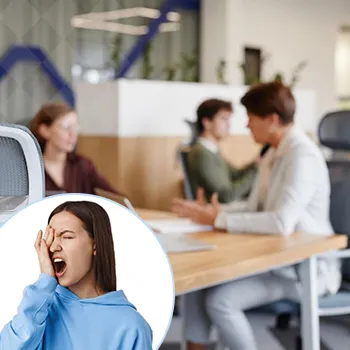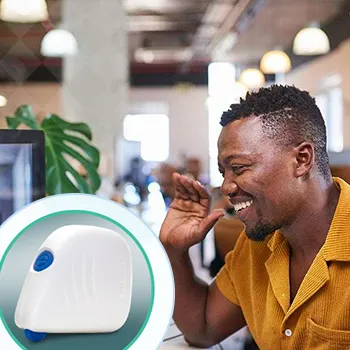Managing Screen Time: Children Eye Health Guidelines
Table of Contents []
- Screen Time Children Eye Health
- Understanding the Impact of Screen Time on Children's Eye Health
- Nurturing Healthy Eyes in a Digital Age
- The Role of Nutrition in Eye Health
- Strategies for Managing Screen Time in the Household
- Introducing the iTEAR100 Solution for Eye Comfort
- Conclusion: Championing Eye Health in the Digital Realm
Screen Time Children Eye Health
Understanding the Impact of Screen Time on Children's Eye Health

The way children learn, play, and socialize has transformed dramatically with the advent of digital devices. While technology offers incredible resources for education and entertainment, it also brings challenges, particularly for children's eye health. Prolonged screen time can lead to eye discomfort, a condition often referred to as digital eye strain. Symptoms such as dry eyes, itching, and tiredness are common among young users glued to their screens. Our commitment to public health drives us to explore how these digital habits are affecting our children's vision and what we can do to safeguard their future.
Children's eyes are still developing and are more susceptible to environmental factors. Without proper care, the blue light from screens can lead to retinal damage and other vision-related issues. However, there are strategies for minimizing negative effects and ensuring healthy eye habits prevail.
The Science Behind Eye Strain
When children stare at screens for too long without a break, their eyes can become fatigued. The blue light from screens can reduce contrast and lead to symptoms such as blurry vision and difficulty focusing. The importance of managing screen time becomes paramount in preventing potential long-term harm.
In addition to limiting exposure, it's essential to create an environment conducive to eye health. This includes proper lighting, screen settings, and regular eye exams. Initiating these habits early can be a cornerstone for healthier eyes throughout their lives.
Protective Measures
We can take several proactive steps to protect our children's eyes from excessive screen time. Encouraging regular breaks, using screen filters, and teaching kids about the 20-20-20 rule are valuable methods. Every 20 minutes, look away from the screen at something 20 feet away, for at least 20 seconds. It's a simple yet effective way to reduce eye strain.
Maintaining a balanced digital diet is also important, where screen time does not dominate a child's day, and other activities are equally encouraged. Fostering an environment that values outdoor activities and hobbies apart from screens is beneficial for their overall development as well as their eye health.
Symptoms to Watch For
Recognizing the signs of eye strain in children is key to preventing more serious issues. Common symptoms include squinting, rubbing the eyes frequently, complaints of headache, or indicating that their eyes are tired. Regular check-ins on their visual comfort can be greatly beneficial.
Paying attention to how your child interacts with screens can offer insights into their eye health. Noticing any changes in their behavior or complaints after screen use should alert caregivers to potential eye strain that needs to be addressed.
Treatments and Solutions
When symptoms of eye strain are detected, it's crucial to seek solutions that support the child's eye health. Adjusting their screen time, improving their diet with eye-health-friendly foods, and ensuring they have proper visual support if needed (like prescription glasses) are viable first steps.
Moreover, innovative solutions like the iTEAR100 device from Olympic Ophthalmics offer a groundbreaking approach to eye care. This handy tool stimulates natural tear production, helping relieve symptoms related to dry and irritated eyes resulting from extensive screen use. Encouraging the child to engage in healthier screen habits combined with supportive treatments can make all the difference.
Nurturing Healthy Eyes in a Digital Age

In the digital age we live in, guiding children towards responsible device usage isn't just about rules - it's about nurturing habits that will serve them for a lifetime. Creating a routine that includes outdoor time, eye exercises, and screen breaks are critical components of maintaining eye health in children. It's a lifestyle adjustment that will help not only with their vision but their overall wellbeing.
The conversation about eye health education should be ongoing. Informative discussions with children about the potential impact of screens on their vision and overall health play a key role in creating awareness. The more children understand their bodies, the better equipped they will be to take care of themselves.
Educational Outreach
Part of our mission is to ensure that clear and understandable information about eye health is available to parents and children alike. Workshops at schools, resource materials in pediatric clinics, and community events can serve as platforms to spread this vital knowledge.
By investing in education, we're investing in the future health of our children. A collaborative effort between healthcare providers, educators, and parents can lead to better health outcomes and more informed decisions regarding screen time and eye care.
Creating Balance
Balancing technology and traditional play can seem challenging, but it's possible with a collaborative family approach. Designating tech-free zones, setting screen time limits, and modeling healthy habits ourselves teaches children the value of balance. Emphasizing alternative activities that stimulate creativity and physical movement is beneficial.
Whether it's through family board games, outdoor explorations, or reading time, these activities not only give their eyes a rest but also promote cognitive and physical development.
Prioritizing Outdoor Activities
Studies have shown that natural light is beneficial for children's eye development. Encouraging outdoor play isn't just about reducing screen time, it's also about giving their eyes the essential exposure to natural lighting conditions which is known to be protective against myopia (nearsightedness).
The outdoors offers a dynamic visual environment that challenges and strengthens the visual system. From depth perception as they navigate uneven terrains to the coordination required in playing sports, children's eyes benefit immensely from time spent outdoors.
Workbook for Eye Health
Creative tools such as workbooks can precisely target the needs of children when it comes to eye health. Interactive activities that educate while also being entertaining could be a fantastic approach to blend learning with eye care.
These resources can include eye exercises, information on nutritious foods for eye health, and tips for safe screen use. Empowering children with knowledge and practical tasks can inspire them to take an active role in their eye health from an early age.
Stop Your Dry Eye Now.

You're here because you have eye irritation or dryness, right? Well, you can stop having that problem. The iTear100 stops your dry eye in just seconds per use, AND you'll need it less as you use it! Click the image above - get relief now, and finally be free of dry eye issues for good!
Stop Your Dry Eye Now.

You're here because you have eye irritation or dryness, right? Well, you can stop having that problem. The iTear100 stops your dry eye in just seconds per use, AND you'll need it less as you use it! Click the image above - get relief now, and finally be free of dry eye issues for good!
The Role of Nutrition in Eye Health

Healthy nutrition plays a pivotal role in maintaining eye health, especially for the developing eyes of children. Essential vitamins and minerals can strengthen eyes against the strain caused by screens. A diet rich in fruits, vegetables, and fish, which provide vital nutrients like Vitamin A, C, E, and Omega-3 fatty acids, can contribute significantly to overall eye health.
Moreover, staying hydrated is equally important, as sufficient fluid intake is essential for natural tear production. Water, in particular, can help maintain the moisture level in the eyes and prevent dryness. Educating children about the benefits of these eye-healthy foods can help them make better dietary choices.
Nutrient-Rich Foods for Vision
Incorporating nutrient-dense foods into meals doesn't have to be a chore. Simple additions to a child's diet such as leafy greens, eggs, nuts, and colorful fruits can make a world of difference. These foods not only support eye health but are also beneficial for overall growth and wellness.
Teaching children to enjoy these foods from an early age can set the foundation for healthy eating habits as they grow. Here are some eye-friendly options to consider:
- Carrots: Rich in beta-carotene, known for improving eye health.
- Spinach: Packed with lutein and zeaxanthin, antioxidants that protect the eyes from harmful light.
- Fish: Omega-3 fatty acids found in fish like salmon contribute to visual development and the health of the retina.
- Citrus Fruits: High in vitamin C which contributes to healthy blood vessels in the eyes.
By combining these nutrient-rich foods with good eye care habits, parents can help their children maintain strong and healthy vision despite the challenges of a digital world.
Staying Hydrated
Ample fluid intake is often overlooked in the conversation about eye health. Hydration is crucial, especially for children who might forget to drink water during long periods of screen use. Remember, well-hydrated eyes are happy eyes.
Setting reminders or having a water bottle close by while using devices could help children maintain adequate hydration levels throughout the day. This simple practice can prevent dry eyes and promote overall eye health.
Visual Vitamins
In some cases, supplements may be recommended to ensure children are getting all the necessary nutrition for optimal eye health. Before deciding to add any supplements to your child's diet, consult with a healthcare professional.
Omega-3 supplements, for instance, can be beneficial, especially for children who do not consume enough fish in their diets. A balanced intake of vitamins and minerals can create a strong foundation for resisting the harmful effects of screen time.
The Balance of a Healthy Diet and Eye Care
Uniting a nutrient-filled diet with proper eye care practices cultivates the best environment for children's developing eyes. Regular meals, filled with vitamins and hydration, supported with screen time management, create a holistic approach to eye care.
Fostering these positive habits in kids can lead to a lifelong appreciation for health and wellness, extending far beyond just vision. It's a journey best taken together, as a family dedicated to nurturing strong and healthy children.
Strategies for Managing Screen Time in the Household

Managing screen time is an integral part of protecting children's eyes. However, it should be approached with understanding and flexibility. Having open conversations about screen use, setting collective goals, and even involving children in decision-making helps build a united front when it comes to digital device use.
Tools such as screen time apps can assist in monitoring and setting limits. Coupled with clear household rules about device usage times and locations, we can create a healthy technology routine for our children.
Open Discussions about Screen Use
Dialogue is powerful. Discussing screen time with children helps them understand its impact on their health. It allows them to be part of the solution, fostering a sense of responsibility towards their own well-being.
By creating an environment where children feel comfortable sharing their digital habits, parents can guide and adjust these habits accordingly. It's vital for our younger generation to feel heard and be a part of the conversation when it comes to their health.
Screen Time Management Apps
Parental control apps can be allies in managing screen time effectively. These tools not only help set limits but also offer insights into the type of content children are exposed to.
Consistent usage of these apps across devices ensures that screen time is balanced and within the boundaries that have been set collaboratively. Tools like these support parents and children in navigating the digital landscape safely.
Setting Clear Screen Time Rules
Every household can benefit from defined rules around screen time. This can range from no devices during meals to specific "tech-free" hours or days. Such practices help children understand that while technology is a valuable part of life, it is not the center of it.
Consistency is key to making these rules effective. When rules are practiced by everyone in the household, they become the norm, making it easier for children to adapt and appreciate the importance of these boundaries.
Quality Over Quantity
Not all screen time is created equal. Focusing on quality content that is educational and constructive rather than purely entertainment-based can make the necessary screen time more impactful. Selecting appropriate content also means that children are less likely to be exposed to harmful or irrelevant material.
Encouraging purposeful use of technology for learning and creativity rather than passive consumption is a strategy that respects the value of digital devices without compromising the health and development of the child.
Technology-Free Bedtime Routine
A screen-free bedtime routine is crucial for several reasons. It supports healthier sleep patterns and allows the eyes to relax and recover from the day's activities. Establishing a ritual such as reading a book or storytelling can replace screens, making bedtime a calming and bonding experience.
This routine not only benefits eye health but also the overall physical and mental wellbeing of the child, setting them up for a restful night and a more productive day ahead.
Introducing the iTEAR100 Solution for Eye Comfort

In responding to the concerns parents have over the effects of screen time on children's eye health, Olympic Ophthalmics has crafted a unique tool - the iTEAR100. The invention is simple yet effective: a portable device that stimulates the body's own ability to produce natural tears. This non-invasive approach to dealing with eye discomfort such as dryness and itchiness is a step forward in managing the symptoms associated with prolonged screen use.
Given that the FDA has cleared this at-home medical device, it presents itself as an alternative to conventional treatments like artificial tears or medications. By simply turning on the iTEAR100, touching it to the side of the nose for a few seconds, children and adults alike can experience instant relief, easing the symptoms of dry eyes connected to excessive screen time.
The Science of Natural Tear Stimulation
The iTEAR100 operates on the principle of neurostimulation. By gently stimulating the nerves responsible for tear production, the device triggers the eyes to produce tears naturally. This can be particularly helpful for children who experience dryness due to reduced blinking rates during screen use.
This form of treatment respects the body's natural processes and avoids the introduction of foreign substances into the eyes. It can be easily integrated into daily routines, offering immediate solutions to discomfort.
A Drug-Free, Drop-Free Approach
The beauty of the iTEAR100 lies in its simplicity and safety. Forgoing pharmaceuticals and eye drops, parents can now resort to a natural method to aid their children's eye comfort. The convenience and efficiency of such a portable device make it a practical solution for families to adopt.
Recognizing the importance of a drug-free alternative, especially for children's regular use, this device fills a significant gap in eye care management for the young demographic.
Talking to a Doctor
Before introducing any new device or treatment to a child's regimen, consulting with a healthcare provider is essential. We recommend setting up a streamlined online doctor's appointment to discuss if iTEAR100 is the right choice for your family.
Our children's health and safety are of utmost importance, and ensuring that this device is a suitable fit is a necessary step in the right direction.
Accessing iTEAR100
If you"ve consulted with your doctor and received a prescription for iTEAR100, acquiring the device is straightforward. You can effortlessly upload the prescription and order the device to be delivered directly to your doorstep. Embracing modern solutions for eye care has never been easier or more accessible.
Navigating children's eye health in a technological era requires us to be proactive, resourceful, and open to innovative solutions. The iTEAR100 may just be the device to help address your family's eye comfort needs. For more information or to order your device, feel free to reach out to us at 650-300-9340 ; we service everyone, nationwide.
Stop Your Dry Eye Now.
You're here because you have eye irritation or dryness, right? Well, you can stop having that problem. The iTear100 stops your dry eye in just seconds per use, AND you'll need it less as you use it! Visit iTear100.com to learn more!
Conclusion: Championing Eye Health in the Digital Realm

As we continue to guide our children through an increasingly digital world, prioritizing their eye health is more important than ever. The effects of screen time on our young ones" eyes can be profound, but with the right knowledge and tools, we can mitigate these impacts successfully. Understanding the symptoms, adopting preventative strategies, balancing nutrition and screen habits, alongside innovative devices like the iTEAR100, constitutes a holistic approach to eye well-being.
Let's embrace the digital age with confidence and responsibility, ensuring that our children enjoy the benefits of technology without sacrificing their vision. Remember, no concern is too small when it comes to the health of our next generation. For personal guidance and to acquire the iTEAR100 device, do not hesitate to contact us. Together, we can nurture the visual health of our children - the visionaries of tomorrow. Reach us at 650-300-9340 for any questions, or to place your new order with Olympic Ophthalmics . We're here for you, and for them, nationwide.
